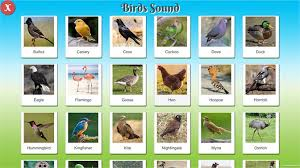Birds sounds
Give a little today and make a big difference tomorrow. Thank you.
In 2000, we bought a working lowland arable farm, Hope Farm, in Cambridgeshire.
Run as a commercial enterprise we use Hope Farm to give hands on demonstrations of how farming can benefit birds and other wildlife without farmers losing income.
Your gift today will help us continue testing the introduction of new wildlife friendly farming.
If you give a regular gift to Hope Farm, you will receive our newsletter, Impact, that will keep you updated on events at the farm. As the UK’s largest nature conservation charity, the use your donations to restore habitats, protect species and save nature. You'll also be invited to visit the project to see how your money is being spent.
Through our work at Hope Farm we aim to show farmers and policy makers that farming can be both profitable, and help wildlife.
We want to sustain the work on the farm – putting wildlife back at the of the UK's farmed countryside.
With a regular gift we can continue to show farmers the benefits of following our lead.
You will be helping wild birds on the UK's lowland farms thrive again. More than 40 million birds have vanished from the UK in 50 years.
Within your lifetime, species such as song thrushes, cuckoos and even hedgehogs could die out altogether.
Find out more about Hope Farm and why we are interested in farming, read the latest updates from the farm, and see how our work is benefiting the birds and wildlife that make lowland farms their home.
Find out more about Hope Farm and why we are interested in farming, read the latest updates from the farm, and see how our work is benefiting the birds and wildlife that make lowland farms their home.
In previous years, we predominantly grew autumn-sown crops because they were considered to be more profitable. Recently, we have introduced a greater area of spring-sown crops, to help deal with pernicious weed problems and maintain overall profitability.
During the first five years only two crops were grown - wheat and rape. These were grown in a three-year rotation. The rotation has evolved to take account of market opportunities and help implement a robust integrated pest management so for harvest 2016 we grew winter wheat, spring barley, winter beans, winter linseed and spring millet.
Along with the arable land, there is also permanent pasture, which is grazed by horses and sheep. The soil is predominantly heavy clay.
Good practice farming such as cutting hedgerows and ditches just once every three years, alongside our trials and the creation of insect-rich and seed-rich habitats have helped us attract new species such as grey partridges and yellow wagtails to breed on the farm.
In 1999, the Government set a target of reversing the decline in farmland birds by 2020. This is measured by the collective population trend of the 19 bird species that are most dependent on farmland in the UK – the Farmland Bird Indicator (FBI).
At Hope Farm, the same measure shows we have not only reversed the decline but produced a major increase since purchasing the farm.
Birds are not only flourishing in the breeding season. In winter, the number of birds using the farm has also increased. Regular visitors include large flocks of reed buntings and yellowhammers as well as our resident barn owls hunting at dusk over the stubble fields.
In January 2016 we recorded 2,933 birds of 48 species, compared to 534 birds of 30 species in January 2001 - a huge increase in diversity as well as abundance.
Species that contribute to the FBI include the corn bunting, goldfinch, grey partridge, jackdaw, kestrel, lapwing, linnet, reed bunting, rook, skylark, starling, stock dove, tree sparrow, turtle dove, yellowhammer, yellow wagtail.
Birds need water for drinking and bathing. Water is particularly important during the winter when natural supplies may be frozen and in dry, hot weather during the summer when water can be hard to find.
Birds have no sweat glands, so they need less water than mammals. However, they do lose water through respiration and in their droppings. Most small birds need to drink at least twice a day to replace the lost water.
Birds get the liquid they need from their food and by drinking. Many insectivorous birds get most of their water from food. Seed-eating birds have a dry diet and they do need to drink more. Water is freely available to small birds at the shallow edges of ponds and streams. They may also drink water droplets that form on leaves, especially if they live in woodland. Aerial species such as swallows and swifts swoop down onto a water body and scoop up a of water while still in flight. Very impressive!
Most birds drink by dipping their bill in water and throwing their head back to swallow. Pigeons and doves are able to immerse their beaks and can drink continuously.




Comments
Post a Comment